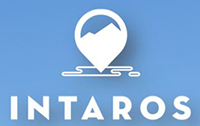Community-based observations from two focal communities
CONNECTING ARCTIC COMMUNITY-BASED AND CITIZEN SCIENCE OBSERVATIONS WITH EXISTING RECOGNIZED DATABASES
Community-based and citizen science observations in the Arctic do not only have the potential to inform management decisions at local or provincial and national levels. The observations can also shed light on changes in the environment on a national and even international scale. This will, however, often require that the community-based and citizen science observations are connected with scientist-based datasets. This document contains the description of a model for connecting community-based and citizen science knowledge systems with scientist-based knowledge systems, and of the effort done in INTAROS to make selected Arctic community-based and citizen science data collections connected with the INTAROS data catalogue.
The model for connecting community-based and citizen science knowledge systems with scientist-based knowledge systems is based on collaborative work with multiple partners, led by Dr Maria Tengö, Stockholm Resilience Centre. The model is primarily for use in situations where management decisions about a specific area or specific natural resources require establishment of a knowledge base. The model depicts graphically the notion of ‘science and other knowledges’ being worked together to build a more comprehensive knowledge base than could be achieved by any one knowledge system alone (Tengö et al. 2014, 2017, and in review). This “Multiple Evidence Base” model positions Indigenous and Local (ILK) and scientific knowledge systems as different manifestations of valid and useful knowledge that generates complementary evidence for sustainable use of land and resources. We demonstrate the use of the model on the case of coastal fisheries management in Disko Bay, Greenland.
The model cannot directly be used for connecting data collections from community-based, citizen science and scientific knowledge systems, but it provides a good background for later applying specific examples of cross-weaving of knowledge. The INTAROS has established a data catalogue (https://catalog-intaros.nersc.no/). The data catalogue comprises brief descriptions of the data collections (meta-data) and links to each dataset. In less than two years, the data catalogue has become an internationally recognized data catalogue for the Arctic environment. As of November 2020, this data catalogue comprises more than 100 data collections. We entered meta-data on a total of 15 Arctic community-based monitoring and citizen science data collections into the data catalogue. Seven of the data collections comprised data from Disko Bay and five from Svalbard. In this report, we describe each of the data collections, the tags and the parameter names used, the links to the datasets, and the potential uses of the data.
